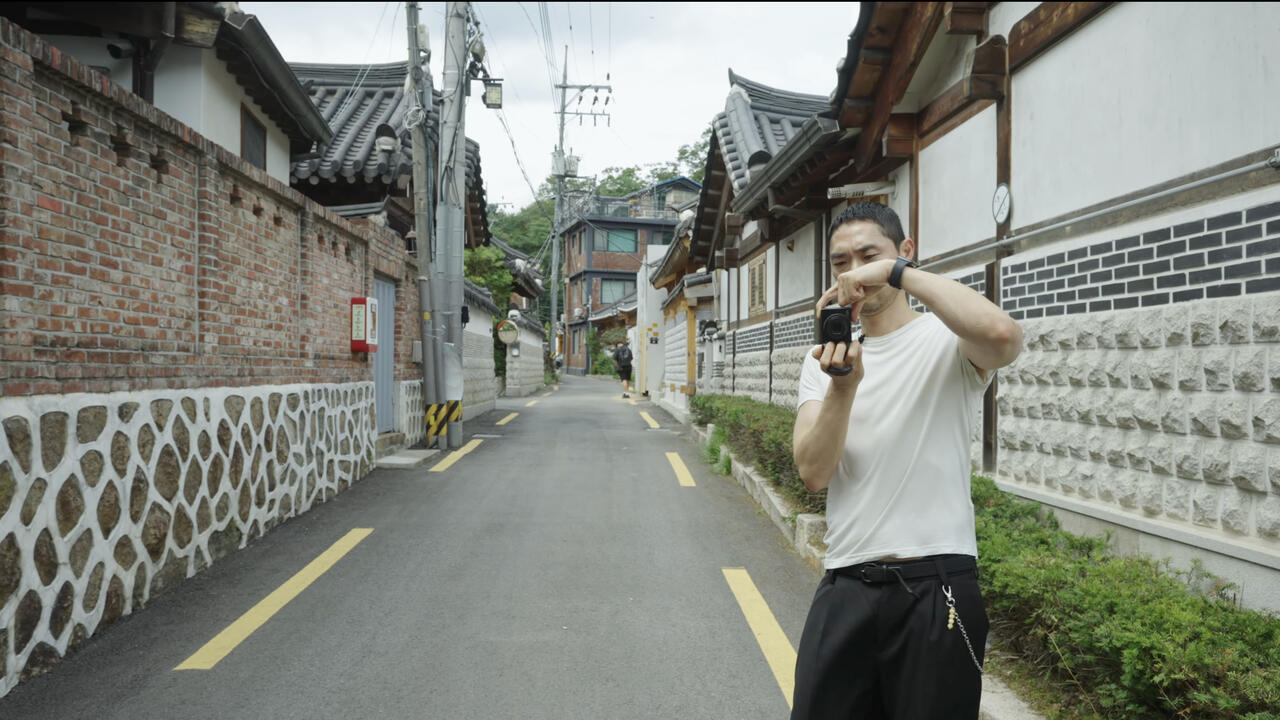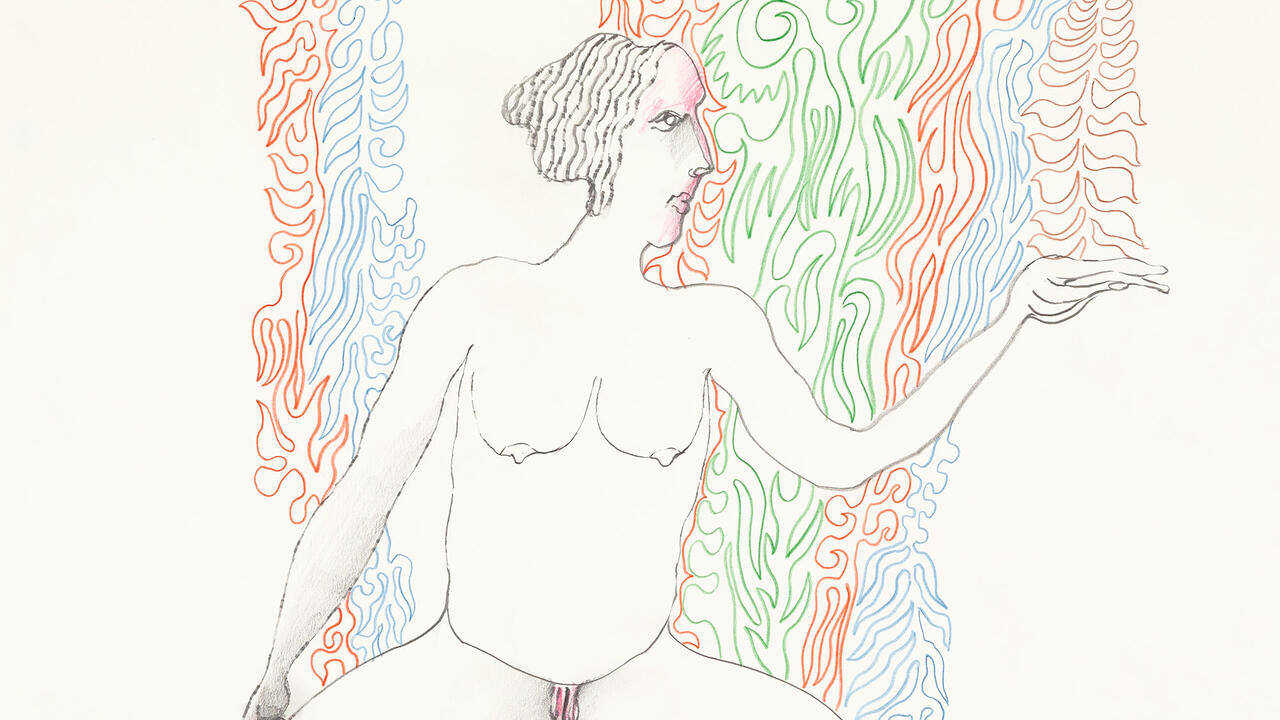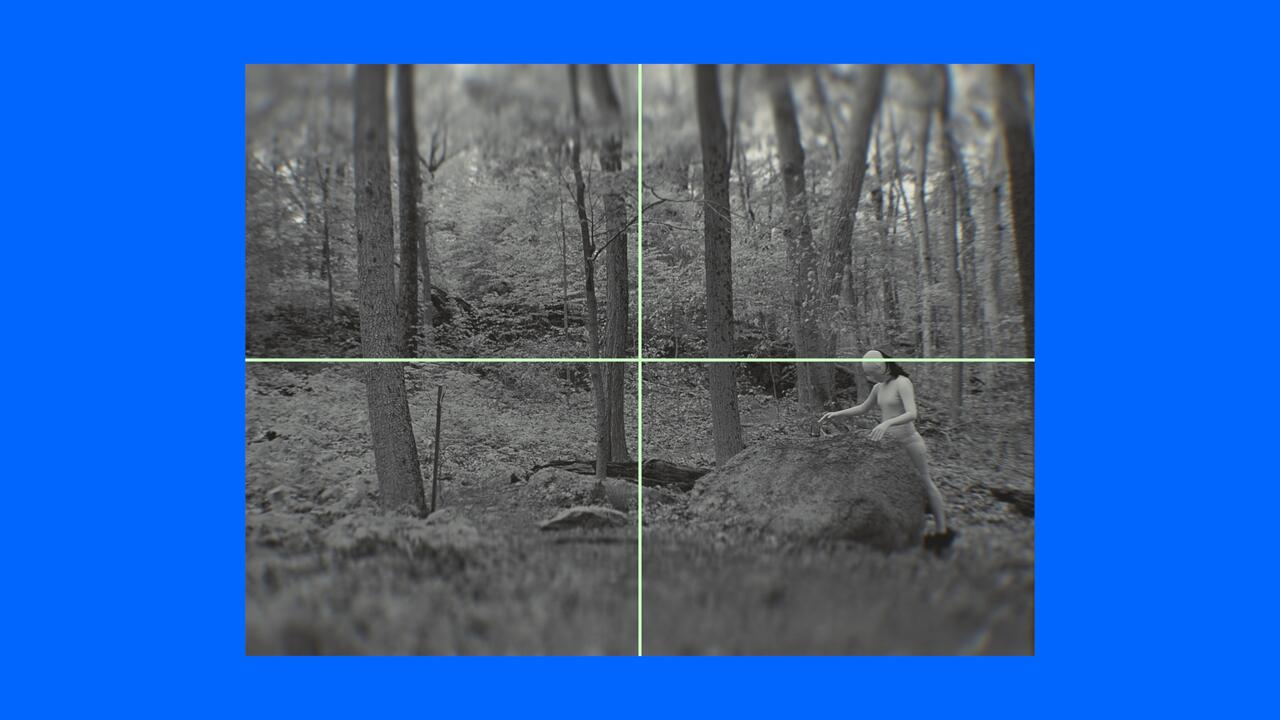Format 11
QUAD, Derby
QUAD, Derby

Curated by Louise Clements, ‘Format 11’ (11 as in 2011), Derby’s International Photography Festival, was titled ‘Right Here, Right Now: Exposures from the Public Realm’ and was centred upon street photography. According to Joel Meyerowitz, a key figure for this event, street photography is ‘pure photography’ – pure because, unlike other photographic genres (such as still life, portraiture or landscape), it doesn’t have an equivalent in painting. While painting can isolate gestures, nothing matches photography’s temporal insistence on a decisive moment – a moment often resistant to and beyond interpretation; at the heart of classic street photography lies a certain magic and mystique. Forms, gestures and details come together to make the picture, as in Meyerowitz’s 1967 Paris street scene, Fallen Man, which shows a labourer carrying a hammer as he sidles around a man lying on the pavement. The pictorial joke is that it looks as though he might have just hit him, but the event ultimately remains a mystery – we do not really know what is going on and that is part of the pleasure and wonder of such pictures.

Garry Winogrand, Untitled (c.1965)
Three hundred photographers and artists were included in this ambitious festival, which was spread throughout the city. In many senses there was too much to take in, especially at the main venue, QUAD, where projections, screen displays and photographs filled every available space. QUAD’s grey-walled space lent itself to video projections or back-lit screen displays of images and tended to give the spot-lit photos a certain cinematic edge.
‘I Photograph to find out what something will look like photographed’ – Garry Winogrand’s famous line acknowledges a certain lack of control integral to the practice of street photography. A photograph’s record of a moment is so instantaneous, the eye does not necessarily see what the camera has immobilized – human gestures, coincidences and situations caught on the fly. The inclusion of Meyerowitz’s selection of mostly previously unseen and unpublished colour work by Winogrand (from 1958–64, shown as digital projections) was an important element of the festival and a reminder of a defining moment of this type of photography. The selection revealed a lighter side to Winogrand’s vision, showing its affinities with the humour and upbeat nature of Meyerowitz’s own work. Both Meyerowitz’s and Winogrand’s photography signals a spontaneity of response that in many ways the whole festival wanted to hold on to.

Vivian Maier
In this respect the work of Vivian Maier was also key. For 40 years Maier made photographs and films while working as a nanny in Chicago, remaining unknown until her archive of more than 100,000 negatives, sound recordings, books and films was discovered by John Maloof in 2008 at a furniture and antique auction. There is much excitement about this discovery. While none of Maier’s photographs were on show, there was a series of Super-8 films, shot in Chicago in the 1960s and ’70s. The films reveal a photographer’s sensitivity and sensibility, attentive and responsive to gestures, details and light: the movements of a street cleaner with his red wooden cart picked out from among the crowds, people in a pop corn booth, the littered streets after a parade and the careful dismantling of a Louis Sullivan building, illuminated in beautiful golden light.

Zhao Liang, City Scene, video still (2009)
Zhao Liang’s video City Scene (2004–5) continued this observational mode, but carried a darker and more critical tone. His vignettes of street and urban life in China, of incidents often taken from a distance with a long lens, mix the comic and violent, street fights and street dancers, drunks fighting in a bar or failing to get in or out of a car. One shows a golfer practicing his swing on a scrap of green before grey tower blocks and factory buildings, while in another, a man, in a similarly bleak setting, hits a ball back and forth against concrete structures. In a splendid comic scene an Alsatian is shown trying to hump a small white dog, below a hoarding bearing the picture of an Olympic Village. The scene closes with the camera moving round to show all the people that have gathered to also watch the incident. City Scene is about the absurd comedy of contemporary life, but not without a wider symbolism and social commentary – the Alsatian’s antics might well be seen as an allegory for what big business and global capitalism is doing to the country. In another scene, we are given a portrait of a street beggar sitting on the kerb – very much a stock documentary subject – only, the camera then moves in close to the empty plate at his feet to show that this, like him, is also broken.
The exhibition also included work driven by conceptual concerns, work which is premeditated and controlled. Thijs groot Wassink and Ruben Lundgren’s Empty Bottles (2007) comprises 24 portraits of street scavengers, pictured as they collect the bottles which have been put in front of the camera by the photographers. Such work goes back to a longstanding photographic genre of picturing street types – only the backdrop of new architecture provides a contrast to the particular low-level thrift. This juxtaposition between setting and figures is also integral to Zhao Liang’s work but his is less illustrational and more open and responsive to the strangeness of events and things in the world.

Michael Wolf, from ‘A Series of Unfortunate Events’
Michael Wolf is fascinated with the accidents, crimes and illicit activities that can be uncovered when using Google Street View. He also isolates beautiful chance moments: a deer caught as it springs across a tree-lined sunlit road towards a beam of light, the animal’s motion causing a partial doubling of its image. Wolf’s appropriations from the global surveillance system of Google as armchair street photography are certainly novel, but the isolation of disruptive or unusual images from the pool of Street View images can nevertheless become quite predictable – especially those showing people on the street giving the finger to Google’s spying. Nate Larson and Marni Shindelman, in a commission for the festival, draw upon the language of Twitter and set its personal messages against the often humdrum places where the messages are sent from, places that they are able to identify through the GPS devices on smart phones. The texts, reduced to the fringe or border of the prints, are by far the most interesting, a kind of intimate poetry drawn from private modes of communication, intended only for one receiver: ‘I’m going to have a beautiful baby if your daddy doesn’t want to know, he doesn’t deserve to know anything at all, love you Lil Baby G.’

Zhang Xiao
Zhang Xiao offers subtle and affectionate photographs of Chinese people in his documents along part of China’s 9,000 miles of coastline, observations of a new leisure culture opened up by Deng Xiapong’s economic reforms.

George Georgiou, Fault Lines/Turkey/East/West
One seaside view depicts a paraglider above waters crowded with both bathers and rubber rings – the people are clearly new to the sea and have yet to learn to swim. George Georgiou’s Fault Lines/Turkey/East West (2010) explores the landscapes of the Balkans, the collisions and tensions between the impact of modernity and the traditions of Turkish people. His tableau-like pictures often set individuals caught up in everyday activities against their environments: a solitary male watering a flowerless grey terrace, for example.

Amy Stein, Car on Fire, Route 17, New York (2007)
Amy Stein photographs captive subjects, stranded motorists. Played out against the mythic association of the road in America, the break downs allow her to take a portrait of a nation’s people at moments of ennui and boredom, but also might be seen to serve as an allegory of the wider political situation, of being let down, of failed promises and dreams.

Bruce Gilden, from the series ‘Head On’ (2010)
Much as street photography is supposed to be about chance and not-knowing, it can sometimes become mannered and repetitious. Habit is in many ways the enemy. We sense this very much in Bruce Gilden’s 2010 commission, ‘Head On’, a series of flash-lit close-up portraits of people from the street in Derby that are harsh and bereft of affection. Presented alongside this was a film about Gilden’s work, which shows his process and gives an insight into how street photography is perceived today. Subjects are very aware of what is going on. They are not naïve to what photographs can do to them and why photographers might want to picture them. An exchange with one woman Gilden wants to photograph shows she knows what she is to him: ‘I’m a character.’ It is an awkward and sad revelation of the coercion involved in the production of his pictures and a reminder that much as we’d like to believe street photography as an affirmative art, responsive to the infinite riches of the phenomenal world, it can also be cruel and manipulative.
















